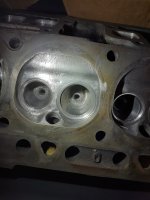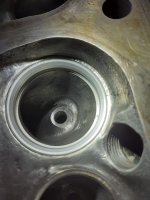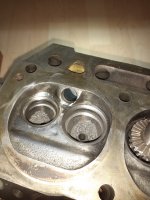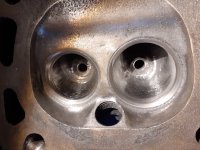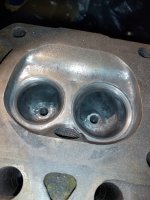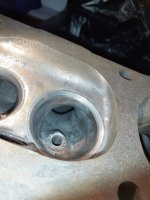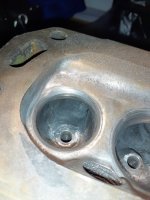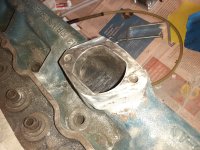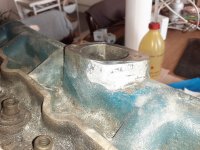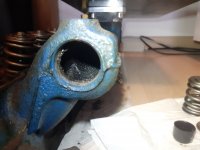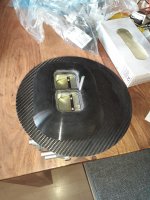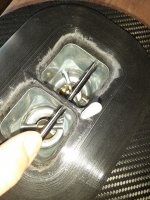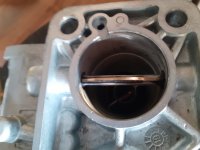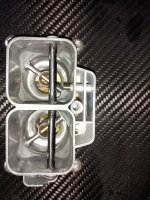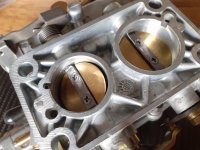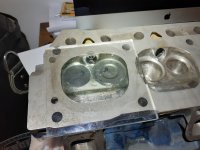Yes, there should be a spot.
It's my opinion that 6 individual pieces would be less waste, cheaper, easier, lighter for the racer in me, and hole spacing does not matter. no clearance issues. Just line up the shims just before you torque it down hard. If i was doing it, I would measure the head base add some fudge factors, drill 6 holes, same size as bolt along the material, put bolt in rocker shaft ass. stand/pedestal over one hole and draw around giving about 1/8'' extra, cut out with fine band saw, hack saw, jig saw clamped down in vice and use like a band saw, file flat, done. Do not forget last stand hole needs to worked to be square, file, dremal etc. for oil flow.
It's my opinion that 6 individual pieces would be less waste, cheaper, easier, lighter for the racer in me, and hole spacing does not matter. no clearance issues. Just line up the shims just before you torque it down hard. If i was doing it, I would measure the head base add some fudge factors, drill 6 holes, same size as bolt along the material, put bolt in rocker shaft ass. stand/pedestal over one hole and draw around giving about 1/8'' extra, cut out with fine band saw, hack saw, jig saw clamped down in vice and use like a band saw, file flat, done. Do not forget last stand hole needs to worked to be square, file, dremal etc. for oil flow.
Last edited:



